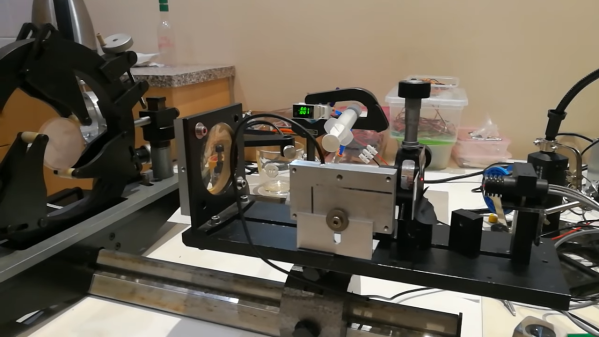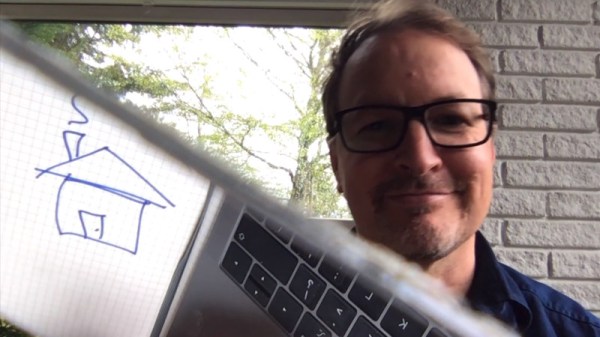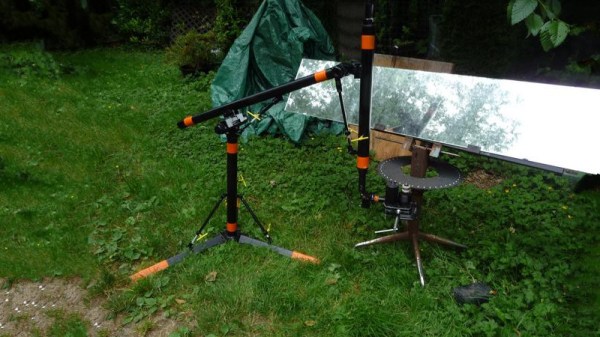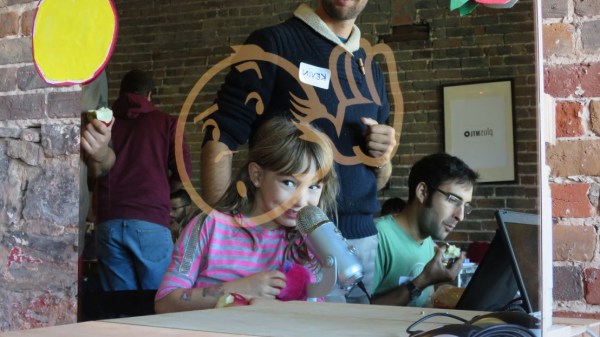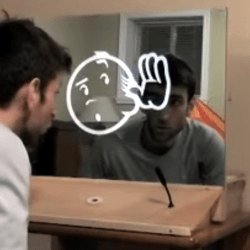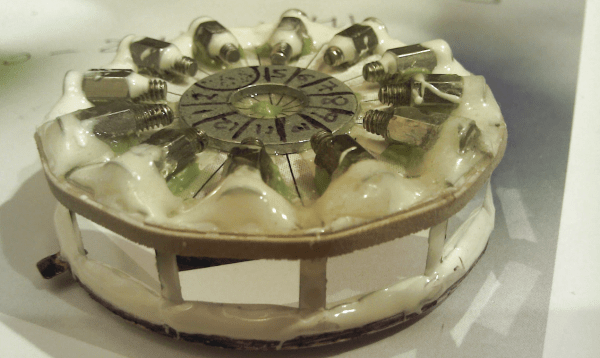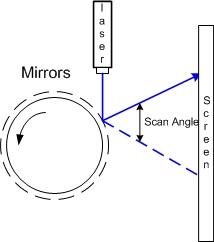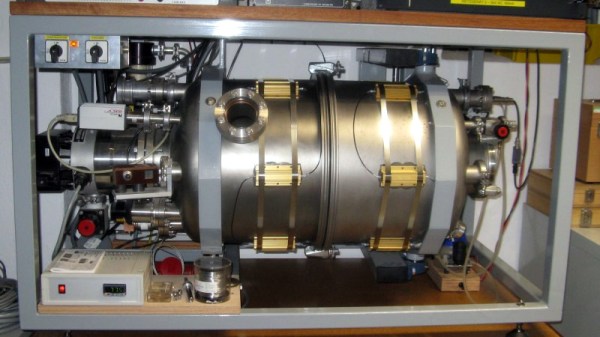Unless you’re in a carnival funhouse, mirrors are generally dead flat and kind of boring. Throw in some curves and things get interesting, especially when you can control the curve with a touch of your finger, as with this variable surface convex mirror.
The video below starts off with a long but useful review of conic constants and how planes transecting a cone can create circles, parabolas, or ellipses depending on the plane’s angle. As [Huygens Optics] explains, mirrors ground to each of these shapes have different properties, which makes it hard to build telescopes that work at astronomical and terrestrial distances. To make a mirror that works over a wide range of distances, [Huygens Optics] built a mirror from two pieces of glass bonded together to form a space between the front and rear surface. The front surface, ground to a spherical profile, can be deformed slightly by evacuating the plenum between the two surfaces with a syringe. Atmospheric pressure bends the thinner front surface slightly, changing the shape of the mirror.
[Huygens Optics] also built an interferometer to compare the variable mirror to a known spherical reference. The data from the interferometer was fed to a visualization package that produced maps of the surface shape, which you can easily see changing as the pressure inside the mirror changes. Alas, a deeper dive into the data showed the mirror to be less than perfect, but it’s fascinating to think that a mirror can flex enough to change from elliptical to almost parabolic with nothing more than a puff of air.
We’ve seen a couple of interesting efforts from [Huygens Optics] before, including this next-level spirit level. He’s not all about grinding glass, though — witness this investigation into discriminating metal detectors.
Continue reading “Variable Mirror Changes Shape Under Pressure”

